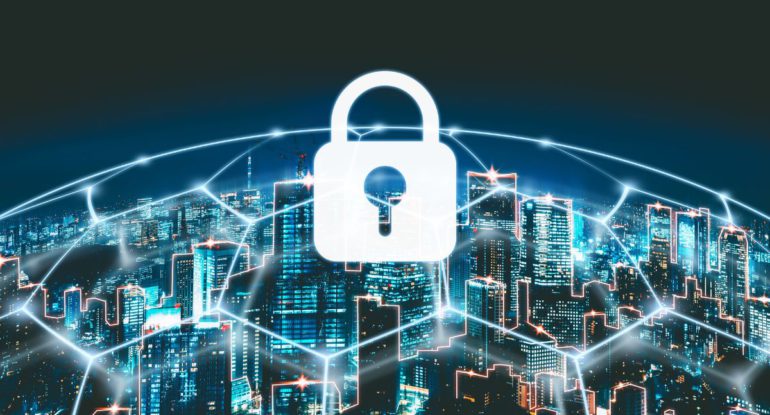Top 10 Ways How Blockchain Is Enhancing Cybersecurity In The Digital Age

In today’s digital age, cybersecurity has become an increasingly important issue. With more and more sensitive information being stored and transmitted online, the risk of cyberattacks is higher than ever. Traditional cybersecurity measures such as firewalls, antivirus software, and intrusion detection systems are not always enough to protect against the sophisticated attacks that are now being launched. However, a new technology has emerged that has the potential to revolutionize cybersecurity – blockchain.
Blockchain technology is the underlying technology behind cryptocurrencies such as Bitcoin, but it has many other potential applications, including enhancing cybersecurity. In this article, we will explore how blockchain technology is being used to improve cybersecurity in the digital age.
Also, read – Blockchain Technology to Offer Solutions to Cybersecurity Threats!
What is blockchain technology?
At its core, blockchain technology is a decentralized, digital ledger that is used to record transactions. Each block in the chain contains a cryptographic hash of the previous block, which creates an unbreakable chain of blocks. The decentralized nature of blockchain technology means that it is extremely secure and tamper-proof. This is because the ledger is distributed across a network of computers, and each computer in the network has a copy of the ledger. Any attempt to modify the ledger would require the attacker to modify all of the copies of the ledger in the network, which is practically impossible.
How blockchain is enhancing cybersecurity
💥How Can #BlockChain #Technology Contribute Towards #CyberSecurity?
v/@BBNTimes_en #NFTs #Decentralization #Metaverse #Web3 #VR #AR #Fintech #Tech #AI #DataScience #BigData #Analytics #innovation #digital #Python #Flutter #JavaScript #IoT #WomenInSTEM #MachineLearning #CES2023 pic.twitter.com/hwmvPrnOSA
— Dr. Khulood Almani|د.خلود المانع (@Khulood_Almani) December 5, 2022
- Decentralization: Blockchain technology is decentralized, meaning that there is no single point of failure. The ledger is distributed across a network of computers, and each computer in the network has a copy of the ledger. This makes it much more difficult for attackers to compromise the system.
- Immutable ledger: Once a transaction has been recorded on the blockchain, it cannot be modified or deleted. This means that any attempt to modify the ledger would be immediately detected by the other computers in the network.
- Public-key cryptography: Public-key cryptography is an essential component of blockchain technology. It is a cryptographic system that uses a pair of keys – a public key and a private key – to encrypt and decrypt information. Public-key cryptography is extremely secure, as it is virtually impossible to reverse engineer a private key from a public key.
- Smart contracts: Smart contracts can be used to automate the execution of agreements and transactions, which can improve the efficiency and security of the transaction process. Smart contracts can also be used to set up automated security protocols that can detect and respond to security breaches in real-time.
- Tamper-proof logs: Blockchain technology can be used to create tamper-proof logs that record all actions taken on a system. This can be used to detect and respond to security breaches.
- Decentralized identity: Blockchain technology can be used to create decentralized identity systems that are more secure and less prone to data breaches than traditional identity systems.
- Data provenance: Blockchain technology can be used to create a record of the provenance of data, which can help to prevent data tampering and ensure the authenticity of data.
- Improved access control: Blockchain technology can be used to create more secure access control systems that are less prone to hacking and data breaches.
- Enhanced supply chain security: Blockchain technology can be used to create more secure and transparent supply chains that are less prone to fraud and data breaches.
- Secure voting systems: Blockchain technology can be used to create more secure and transparent voting systems that are less prone to manipulation and fraud.
Conclusion
In today’s digital age, cybersecurity is of utmost importance as cyberattacks continue to increase in frequency and sophistication. Blockchain technology offers a promising solution to many of the cybersecurity challenges that businesses and organizations face. By providing a decentralized, tamper-proof, and transparent platform for storing and transmitting data, blockchain technology can significantly enhance cybersecurity and improve the overall security of digital systems.
The top 10 ways that blockchain is enhancing cybersecurity include decentralization, an immutable ledger, public-key cryptography, smart contracts, tamper-proof logs, decentralized identity, data provenance, improved access control, enhanced supply chain security, and secure voting systems. These features of blockchain technology can help to prevent data breaches, fraud, manipulation, and other security threats.
However, it is important to note that blockchain technology is not a silver bullet solution to cybersecurity challenges. It is still in its early stages of adoption and implementation, and there are still some challenges that need to be addressed, such as scalability and interoperability.
Nonetheless, the potential benefits of blockchain technology in enhancing cybersecurity are significant. As more businesses and organizations adopt blockchain technology, it is likely that we will see a more secure and transparent digital landscape in the future. Therefore, it is crucial for businesses and organizations to stay up-to-date with the latest developments in blockchain technology and explore how it can be integrated into their cybersecurity strategies.




























































